#Saint Nicolas
Text
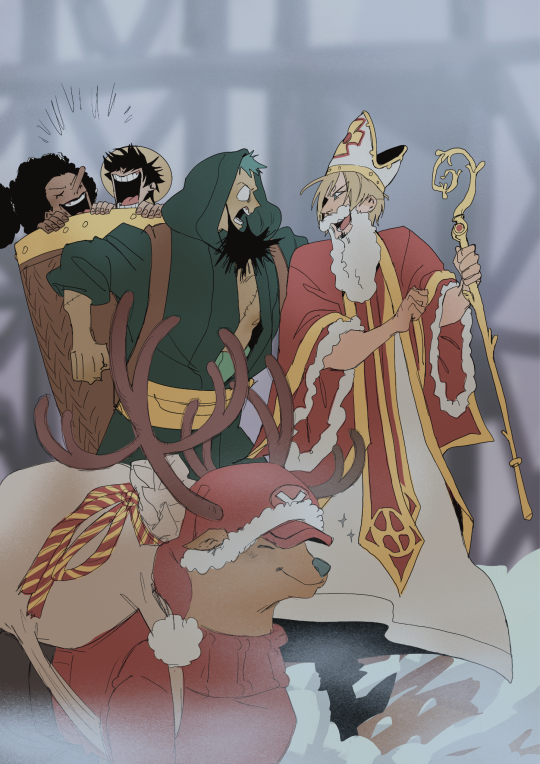
"WHY AM *I* KRAMPUS ?!!!"
"because hes supposed to be scary :p"
day 6 of the ✨One Piece Advent Calendar✨
its Saint nicolas taday, and i know its not celebrated in the rest of the country but im
well im far from home and im missing it lol
#luffy and usopp tried to steal the chocolate#art#artists on tumblr#digital art#advent calendar#op#one piece#saint nicholas#krampus#père fouettard#saint nicolas#sanji#choooer#zoro#usopp#luffy#tony tony chopper#black leg sanji#vinsmoke sanji#roronoa zoro#hadnt even have a manala yet TOT
1K notes
·
View notes
Text
"kill them with kindness" WRONG. Santa attack
🎅👊💥🎅👊💥🎅👊💥🎅👊💥🎅👊💥🎅👊💥🎅👊💥🎅👊💥🎅👊💥🎅👊💥🎅👊💥🎅👊💥🎅👊💥🎅👊💥🎅👊💥🎅👊💥🎅👊💥🎅👊💥🎅👊💥🎅👊💥🎅👊💥🎅👊💥🎅👊💥🎅👊💥🎅👊💥🎅👊💥🎅👊💥🎅👊💥🎅👊💥🎅👊💥🎅👊💥🎅👊💥🎅👊💥🎅👊💥🎅👊💥🎅👊💥🎅👊💥🎅👊💥🎅👊💥🎅👊💥🎅👊💥🎅👊💥 🎅👊💥🎅👊💥🎅👊💥🎅👊💥🎅👊💥🎅👊💥🎅👊💥🎅👊💥🎅👊💥🎅👊💥🎅👊💥🎅👊💥🎅👊💥🎅👊💥🎅👊💥🎅👊💥🎅👊💥🎅👊💥🎅👊💥🎅👊💥🎅👊💥🎅👊💥🎅👊💥🎅👊💥🎅👊💥🎅👊💥🎅👊💥🎅👊💥🎅👊💥🎅👊💥🎅👊💥🎅👊💥🎅👊💥🎅👊💥🎅👊💥🎅👊💥🎅👊💥🎅👊💥🎅👊💥🎅👊💥🎅👊💥🎅👊💥
206 notes
·
View notes
Text

Hey, friends! I hope you don't mind if I try to peddle a project I've been working on. After three years of designing, drawing, making prototypes, etc, I'm finally releasing (taking orders for) the wooden wall-hanging Santa's Workshop DisPlayset. I wanted to make something that people can hang in their homes year after year, and to be part of their holiday traditions.

The set comes with Santa, Mrs. Claus, and ten elves.


It's made of sturdy 1/4 birch, and has nine platforms on which to position the figures.
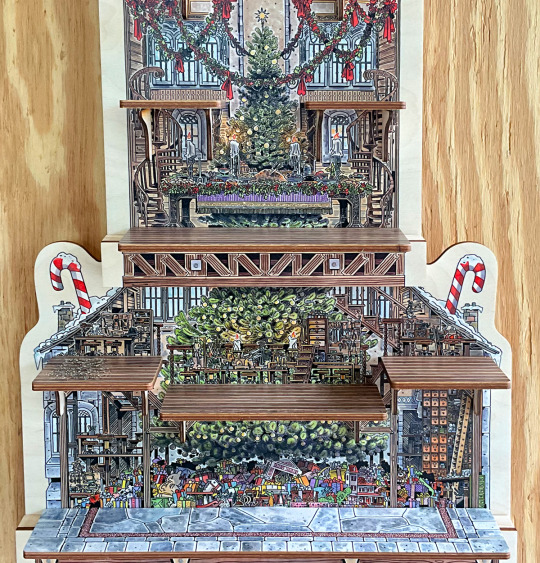
It also has a shelf below the stables on which to place the story cards that come with each figure:
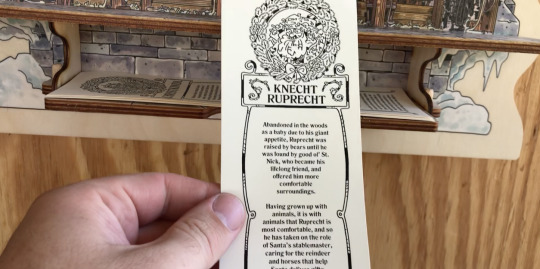
I've also got 25 additional Christmas and winter holiday figures ready to populate the workshop, available either individually or as a big collection:

Thanks for taking a look! I really appreciate it. This has been a labor of love for a while and I'm excited to put it out into the world.
I'll be taking orders for US customers (looking into international shipping, but it's very difficult and pricy to manage) until August 15, 2023 to have them mailed by October 31, 2023 so you right-after-Halloween Christmas decorators can get yours up quick.
You can order the Workshop and/or figures at SchweizerCraft.com
Thanks again!
#Christmas#Folklore#Holiday Decor#Santa#Santa Claus#Handcrafted#Mrs. Claus#Krampus#Mari Lwyd#Bellsnickel#Greek Mythology#Callisto#Ded Moroz#Saint Nicolas#Handmade Toys
379 notes
·
View notes
Text

Mik Miku Mik Miku Mikuláš 👀
#do tohohle jsem dala mnohem víc času a energie než jsem měla :')#čumblr#czech art#shitpost#česky#czech#czech tumblr#český tumblr#hatsune miku#saint nicolas#hezky česky#fuckin kill me#I'm sorry not sorry to people who find this with no context#vánoční arty#moje arty
243 notes
·
View notes
Text
I was trying to look around to see if I could find some more information about Père Noël in its pre-Americanized incarnation online, but unfortunately most websites share the misinformation that "Père Noël" only existed from the 50s onward and was a French invention... No. [Note: I know books exist folks, but I precisely wanted to do a web research first]

There is only one website that does not share this idea and does identify Père Noël as a typical French figure that was then overtaken by the American Santa Claus, and the most fascinating thing is that it points out (despite previous sources I shared claiming "Père Noël" was first recorded in literature in the mid-19th century, by people describing their youth around the turn of the 18th-19th century) that Père Noël seems to have existed since the Middle-Ages, with texts referring to "Père Noël" or to "Monseigneur Noël". But it does recognize that the Père Noël traditions really boomed in the 19th century and were associated with the bourgeoisie of the time...
The website in question however is mostly focused on the various local, regional incarnations of the gift-giver - because as with many things in France, this tradition is rather a set of various regional and localized specificities that were ultimately synthetized into one entity.
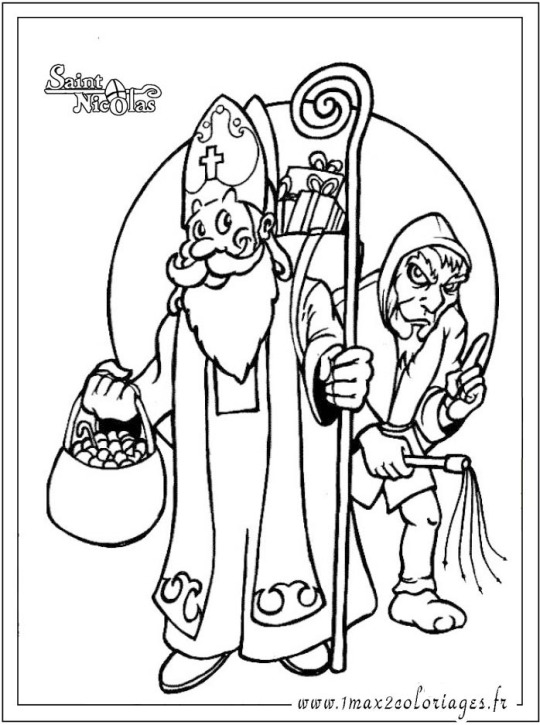


It reminds that in the Lorraine and Alsace region, the Germanic cultures and German influences make it so that Saint Nicholas and Christkindl are still the main gift-givers. In Lorraine it is Saint Nicolas who is most honored (he is after all the saint patron of Lorraine). Appearing in his bishop outfit that makes him look a lot like Santa Claus (thick white beard, large clothes of red and white), every 6th of December he brings gifts and treats to nice children - while naughty children are confronted by his dreaded companion, Père Fouettard dressed in blacks, who beats up with a stick bad children. Saint Nicolas is also still strongly celebrated in the North of France (aka, what is above the Parisian region, because despite what some foreigners believe, Paris is not part of the North).

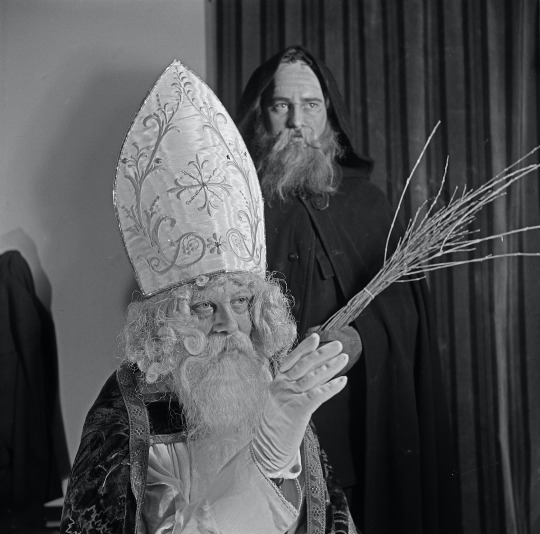
While in Alsace it is the Christkindl that still goes strongly, with Hans Trapp as its own Père Fouettard. The website briefly reminds that Christkindl is an avatar/incarnation of the Child-Christ, or Baby Jesus, that ended up being fused with the 23rd of December Saint, Sainte Lucie (Saint Lucia), resulting in this unique Christmas figure appearing as a woman dressed in white with a crown made of fir branches topped by four candles. It also reminds how Christkindl stays a symbol of Protestant end-of-the-year celebrations, as they pushed the Christkindl figure to oppose and replaced the Catholic celebrations of Saint Nicolas. Finally, there is an Alsace-specific legend that claims Hans Trapp actually originated as an Alsacian lord that tyrannized his people - Hans von Trotha, the 15th century lord of Wissembourg.
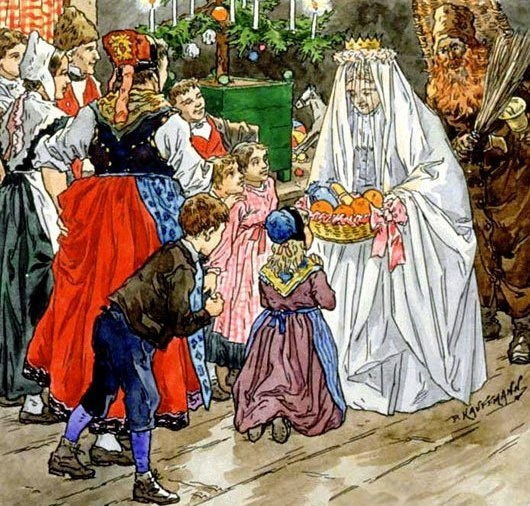

[Given the Alsace region has a lot of website pages about its traditions I'll place here in brackets informations from other websites:
The Christkindl, also written Christkindel or Chriskindla, is a Christian figure that is supposed to be an embodiment of L'Enfant Jésus, Child Jésus (the name comes from Christ-Kindel ; Christus-Kindlein, Christus als Kind), but definitively was influenced by Saint Lucia, who is very big in Scandinavia. In fact, Saint Lucia and the Christkindl look a lot like each other - female entities dressed in white with a crown of candles... Though the Christkindl can appear both as an adult woman and as a little girl, and also tends to have white veils. People tend to also find in Christkindl remnants of the Germanic goddess Berchta. No need to tell you that the Christkindl is big in all parts of the world influenced by German culture - Germany, Austria, northern Italy, Croatia, Slovenia, Switzerland, Czech Republic, and even some parts of Brazil, the ones where there was strong German imigration.
The Christkindl appeared in the 16th century with the Protestant Reform. Up until this point the day of Saint Nicolas was a very big thing in Alsace - saint-patron of school students, he offered good children mandarines and "manala" (a brioche in shape of a child). But the Protestants did not agree with this (Protestants were known to strongly dislike saints in general), and so they replaced the saint with the Christic figure of Christkindl, while keeping Père Fouettard/Hans Trapp (whose job was to threaten with stern lectures naughty children... or take them in a bag to abandon them in the deep dark woods). The change occured over the 16th century, from 1530-1536 (last mentions of Saint Nicolas in Alsace) to 1570 (first mention of Christkindl, when the Klausemärik was replaced by Christkindelmärk). In fact, Christkindl still has some Saint Nicolas traits - she also goes around with a donkey, named Peckeresel, which carries two bags, one for the treats (mandarines and bredalas), one for the whips. People left hay or carrots for the donkey to eat by the front door. Pastor Johannes Flinner made a strong public attack against saint Nicolas in Strasbourg during the "cultural transition", by pointing out that distributing gifts to all should be the prerogative of the Christ and no one else.
During the 20th century the Christkindl lost popularity in Alsace (jee, I wonder why France would like to bury Germanic traditions in the century of World War II) - but it returned in the traditions from the 1990s onward.
Fascinatingly, despite being supposedly a Christ-figure of an angel, the Christkindl, or White Lady, is also frequently called in alsace, a "fée", a fairy, la fée de Noël, the Christmas fairy. It doesn't help that she sometimes carry around a wand with a star at the tip, that is strikingly reminding of the stereotypical fairy-wand. Another irony of fate - despite the Christkindl being brought over to replace Saint Nicolas, the two currently still coexist in Alsace thanks to people not wanting to abandon the good old bishop. A third fun fact: originally the Christkindl could be played as much by women as by men, due to being a truly androgynous entity. From the 16th century onward, the Saint Nicolas celebrations were replaced in Alsace by parades of teenagers of both sexes dressed in white, going from door to door to give gifts and sing Christmas songs. However you can't have teenage boys and girls go around late at night without getting some problems... And those "Saint Nicolas hook-ups" were a real problem in Alsace, you have records from the 17th and 18th centuries pointing out how authorities have to try to refrain all the Christkindl from... well you know.]
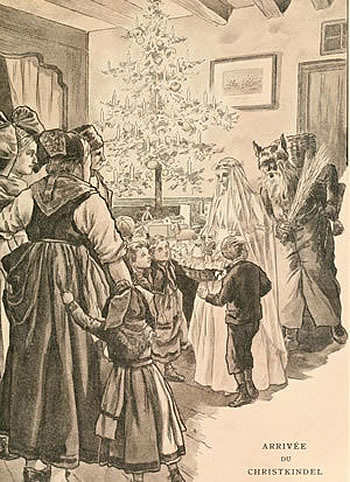


The next entity presented is the famous Pays Basque character of Olentzero, whose appearance is that of a coal-man. Well a bizarre coal man - he has a bag filled with coal in one hand, a sickle in the other, a large beard on his face and a béret on his head. According to the Basque-version of the Nativity lore, he lived at the top of the mountains but saw in the sky the announcement of the birth of Kixmi (Basque name for Jésus), and he descended from his mountains to announce the good news. While he is the gift-giver of Pays Basque, leaving gifts for children in the night between the 24th and 25th of December, entering in the house by the chimney ; he is also a bogeyman figure, as he was a scary-looking man who was said to take away in a bag naughty children. As with everything Basque, Olentzero is actually a pre-Christian figure, as the very name of the character is related to the "pagan" winter solstice celebrations of the old Basque religion.
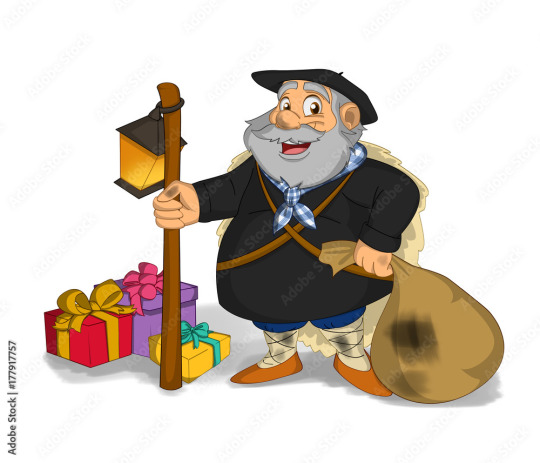
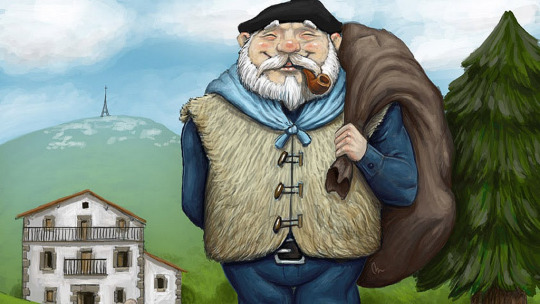
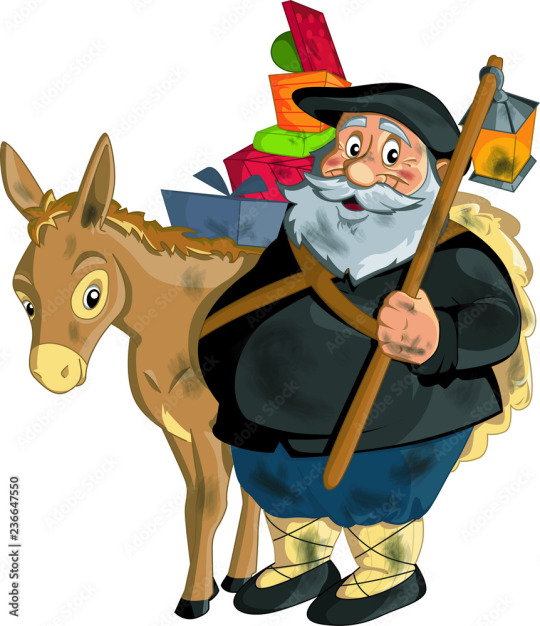
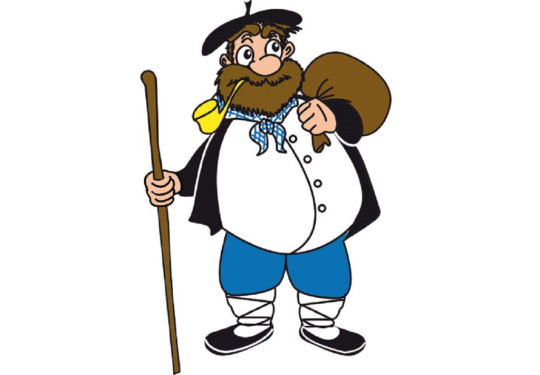
[Again, time to bring some more information from other websites to make sure I give a more complete portrait:
Long story short, because the Basque folklore is very well documented and I can't spend too much time on this, the Olentzero (or Olentzaro, Orentzaro, Omentzaro, Orantzaro...) is at the same time the Basque name for Christmas and the Basque figure of the coal-man that brings gifts during Christmas. He is supposed to be a grotesque character - rude, fat, dirty, gluttonous, his face blackened by soot, with worn-out clothes... He is basically a caricature of mountain-men and forest-men. Sometimes he is even given monstrous traits such as "having as many eyes as there are days in the year, plus one" - which is reminding of a French being of the New Year folklore called L'Homme aux Nez who also has as many noses as there are days in the year...He typically holds branches of gorse in one hand and a sickle in the other.
He comes down from the mountains, enters houses by chimneys, goes into the kitchen once everybody goes to sleep to eat all leftover food, and he warms himself by the fire - either you had to leave a log burning just for him, either he used the flames of the fire to burn his gorse branches. In fact, "olentzero" was also the name of a special log that was left bruning in the fireplace from Christmas to the 1st or 6th of January. This theme of the "coal man" of winter or the burning of branches all answers to a deep motif of bringing back light and heat in the heart of the cold and the dark. Him holding a sickle has made people draw parallel between him and the figure of Saturn/Kronos.
In fact, there is an old tradition, long before the Olentzero was embodied by a disguised man or by a mannequin paraded through the villages, to embody the character simply by the sickle. The sickle hanged by the chimney, as a threat to all disobedient children, to all lying children, and to all children that refused to go to bed. Another symbol of the Olentzero, outside of the sickle and the coal-sack, is a wine-bag or wine-bottle that he carries around, because to add to the grotesque he is also a drunkard, and according to stories it is because he gets often drunk that his wife regularly beats him. (Because yes the Olentzero has a wife, a character named Mari Domingi and who is typically depicted wearing a medieval regional outfit). However it seems that all this grotesqueness is simply due to the Olentzero being a character from the old Basque mythology that got Christianized - think of how the Dagda of Celtic mythology also got more buffoonish/clownesque/grotesque as time passed. We do know that the roots and origins of the character lie in the valley of Bidassoa...)
Today gone is the creepy bogeyman and grotesque glutton ; the Olentzero has evolved into a kinder, nicer, cleaner incarnation that is closer to the Père Noël traditions. For example he now parades through streets during the day, riding a horse (pottok) or by foot, giving children candies and sweets (including fake-coal actually made of sugar) ; and the legend claims he goes down from the mountain to offer coal and wood-logs to the poor families that can't afford fuel for their fire]


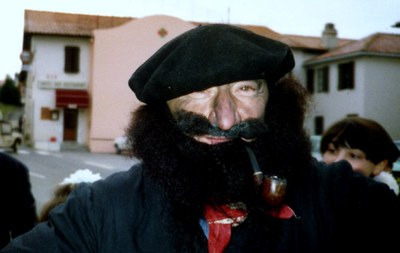

And finally, we find back our good old Père Janvier! Here we have most of the same info as previous. Père Janvier was a Bourgogne character, most present in the Morvan and Nivernais regions up until the 1930s. He brings gifts in the night between the 31st of December and the 1st of January by going through the chimney - chimney which must be decorated with holy and mistletoe. Père Janvier (Father January) typically looks like a skinny old man with a long white beard, dressed in a brown monk-like robe, and he is usually bent due to wearing on his back a heavy wicker basket filled with toys. And he too has for companion the Père Fouettard.
Most interestingly, the website mentions "Père Janvier variations" across France, most notably the Savoie character of Père Chalande, and the Normandie character of Barbassioné.


More information from other website. Le Père Chalande (or Papa Chalande, Daddy Chalande) was indeed a figure of the Savoie region, but also of the Dauphiné, and he was also present in Geneva. Martyne Perrot, in her book "Faut-il croire au Père Noël? Idées reçues sur Noël" even lists the area of action of this figure as: Savoie, Suisse romande, Bresse, Forez, Ardèche, Gard, Lozère and Hérault. He is basically identical to Père Noël because "Chalande" is just an old word for "Noël" (Christmas) in the regional language known as arpitan.
There was a traditional song that went as such: Chalande est venu / Son chapeau pointu / Sa barbe de paille / Cassons les anailles (noisettes) / Mangeons du pain blanc / Jusqu’à Nouvel An. / Il monte dans sa chambre / Il trouve une orange / Il la pluche / Il la mange / On l’appelle le petit gourmand. / Il descend les escaliers / Il se casse le bout du nez / Il va chez le cordonnier / Se faire mettre une pièce au nez / Quand il est malade / Il mange de la salade / Quand il est guéri / Il mange des souris/ Toutes pourries !
I can't translate the full song, but it refers to various traditions. For example leaving an orange for Père Chalande ; Père Chalande wearing a "beard of straw and a pointy hat" (leftovers of Saint Nicolas, especially the pointy hat) ; Père Chalande giving "anailles" (walnuts) to children ; and the habit of placing inside the Christmas log (real log of the fire) chestnuts, so that the burning of the Christmas log doubled as the cooking of the wintery treats. Raymond Christinger wrote in 1965, in a set of research about Geneva folklore, an article studying the character of Chalande, if you know how to read French: here.
While doing Chalande research I stumbled upon a Swiss theory brought forward by a journalist named Bernard Léchot - I don't know how accurate this is when it comes to actual evolution of Christmas figures, but here it is. According to him, the Christmas archetype of the "Old Man" actually comes 18th century Germany. In this era of rationalism, the German Protestant landgraves decided to introduce some laicity to their country, and so cut-off all characters close to Christianity from their Christmas celebrations (from Saint Nicholas to Christkindl). As a result, pagan figures returned, including the Old Man in the shape of Weihnachtsmann. Which then spread to other European countries, each land creating its variation: Bonhomme Noël in France, Father Christmas in England, Père Chalande in Savoie.
As for the Barbassioné of Normandie, I found nothing about him. As in every says it is the Normandie name of Père Noël, but he doesn't have any specific thing to his character.

To conclude, I will link you to a page documenting a Père Noël/Christmas beings exposition that collected various visuals of the history of the Christmas gift-givers through time, right here.
And through it you will see the evolution from the "Scandinavian ancestors" (Thor and Odin) and Saint Nicolas (celebrated in Germanic countries and the Alsace region), to the American Santa Claus and the British "Old Father Christmas", passing by the Germanic Knecht Ruprecht, the also Germanic Weihnachtsmann, the Christinkindel (of Germany, Belgium and Alsace), the Jultomte of Sweden, and the Enfant Jésus/Child-Jesus of France and Italy...
Without forgetting the French Bonhomme Noël, the Italian Befana, the regional ancestors of Père Noël (Tante Arie, Père Chalande, or the Breton Ted Nedelec), the Russian Ded Moroz, and Mère Noël (Mother Christmas)... With additional sections about Santa Claus in advertisements, the theme of "outlaw Father Christmas", Père Noël during the World Wars, and more...
#french folklore#father christmas#père noël#saint nicolas#christkindl#père chalande#père janvier#christmas folklore#olentzero#basque folklore#hans trapp#père fouettard#christmas art#santa claus#christmas
15 notes
·
View notes
Text

Maenele de Saint Nicolas en approche...
#Maenele#brioche#saint nicolas#tradition#elsass#maeneletime#avent#elsasstime#elsassmood#sankt Nicklaus#patisserie
32 notes
·
View notes
Text
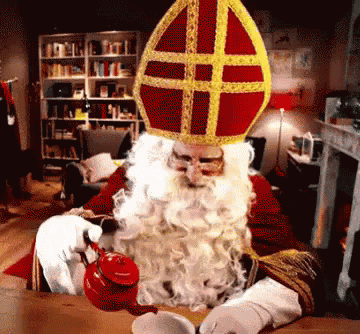
Tea Time ! 🫖🍵🍪
« Saint Nicolas est le premier Sugar Daddy 🎅 de l'humanité. ».
Mario Scolas
Gif Tenor
#gif animé#tenor#tea time#thé#goûter#saint nicolas#quotes#mario scolas#bonne saint nicolas#heure du thé#fidjie fidjie
28 notes
·
View notes
Text
Saint Nicholas
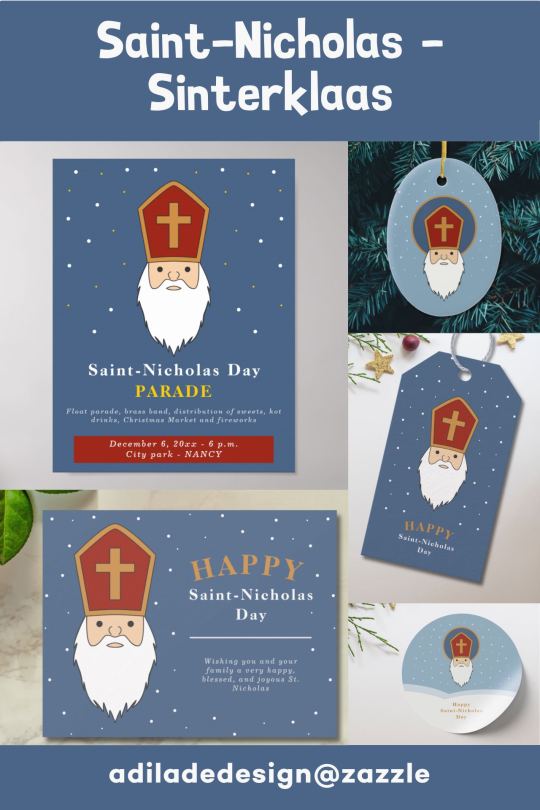
Saint Nicholas: celebrated at the beginning of December in Europe.
#sinterklaas#stnicholas#saintnicholas#st nicholas#saint nicholas#saint nicholas day#saint nicolas#saintnicolas#gift tags#gift tag#sticker design#stickerdesigner#christmas ornament#greeting card#zazzlemade#zazzlestore
4 notes
·
View notes
Text
Et dire qu'il faut commencer à préparer noël

J'en perds la tête
3 notes
·
View notes
Photo

(via GIPHY)
#giphy#ho ho ho#nikolaus#leofinedesign#wudesign#st nicholas#saint nicolas#nicolaus#nikolaustag#st nikolaus#draussen vom walde komm ich her#snow snow snow
2 notes
·
View notes
Text

#de casino#Sint-Niklaas#saint nicolas#belgium#belgië#belgique#man or astro-man?#man or astro man?#man or astro man#gig posters#gig poster#surf music#surf rock#affiche#graphic#design#Illustration#art#artwork#concert poster#poster design#music posters#poster art#posters music#posters#poster#garage band#garage music#garage#2013
5 notes
·
View notes
Text
The supermarket I used to work at as a student for five years, had the cashiers packing the bags as well.
St Nick (not Santa) is coming around, and I still miss the times people would interrupt me after taking their chocolates, mandarins and biscoff (which we still call speculaas whatever Lotus wants us to belief) saying:
“Please wait. Put this in a separate bag. It’s for my grandchildren”
“Can you put it in a box? I don’t want my youngest to see”
Such happy moments.
#Santa#st nick#sinterklaas#saint nicolas#cashier#supermarket#happy memories#simple things make me happy#simple things
12 notes
·
View notes
Text
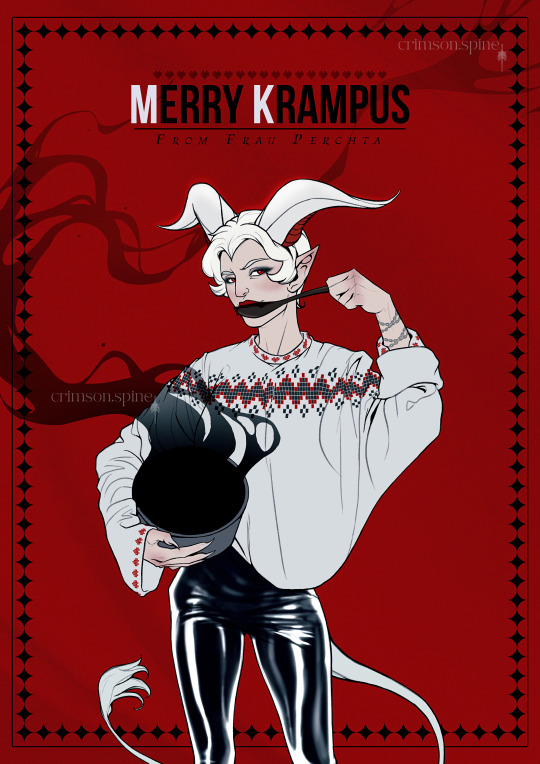
Merry Krampus!
#krampusnacht#frau perchta#krampus#saint nicolas#lllustration#gothique#dessin#digital art#fête#holidays#christmas
11 notes
·
View notes
Photo

I started a collection of Christmas characters last year (though I didn’t post ‘em on tumblr), and I'm gonna add to it this year), posting one per day through the 23rd.
COMPANIONS OF CHRISTMAS 1: SANTA CLAUS, or Saint Nicolas (“Santa” means “Saint,” and “Claus” is short for “Niklaus/Nicolas)!
Born to wealthy parents in a small port city in Asia Minor, Nicolas became a gift-giver at a young age when, upon learning that three sisters who wished to wed their loves could not do so because they had no dowry with which to pay their future husband’s family, he tossed coins through their window in the dead of night. Finding that he could so easily change lives for the better and bring hope to those who had little through these small acts of generosity, he sold his property and belongings and used the money to continue helping those he found in need. As he was already following his god Jesus’s order “sell what you possess and give the money to the poor,” it was only natural that he would adhere to the next dictate “then come, follow me,” which he did, becoming first a Christian priest, and, soon after, the bishop of Myra.
While Nicolas, a noted brawler even during his bishophood, never backed down from a fight in service to others. He frequently found himself rescuing the innocent from execution, saving children from those who would exploit them, and battling monsters and creatures long viewed by the Christians as servants of evil. But instead of killing these foes, Nick would recruit them. Using both force and Christian magic, he would make them accompany him on his errands and missions of mercy, and the exposure to his generosity and kindness changed their perception and their hearts, turning them from forces of destruction to forces of good, though few lost any of their wildness.
Nicolas was born a mortal man, and died one, at the age of seventy-three, on December 6, 343. His devotion to his faith and service to his neighbors ensured his place in heaven, but heaven was no paradise for Nick, who fretted constantly for the children of the world. He petitioned the three aspects of his god for a charter, to return to earth and bring joy and comfort to its children through acts of charity and joy. His charter was granted, and he returned to earth one year later, and he has done his good works each December since.
#Christmas#Santa Claus#SchweizerCraft#SchweizerCraft Christmas#CompanionsOfChristmas#Saint Nicolas#Christmas Lore#Christmas Traditions#Christmas Legends#Folklore#St Nick#St Nicolas
169 notes
·
View notes
Text

◼️ La citation du dimanche ◼️
#kaamelott#dame séli#joelle sevilla#léodagan#lionnel astier#livre I#la fête de l'Hiver#alexandre astier#citation#quote#saint nicolas
3 notes
·
View notes
Text
As a continuation of my posts about the Père Noël (here and here already - this will become a full series), I want to expand a bit on what I said about the confusion between Père Noël (Father Christmas), and his "dark companion", Père Fouettard (Father Whipper) - the gift-giver and the punishment-giver.
There is this famous image (that appeared in a book about the evolution of Christmas symbols of mine, that I might talk about next year) that truly shows how the two figures were supposed to be so much look-alikes you had a hard time telling them apart.

Once again, they were the two sides of the same coin. Same stern look, same beard. The two have a basket: one filled with toys, the other filled with crying children. The two carry wood - but while Père Noël or Bonhomme Noël carries a small Christmas tree or a walking staff, Père Fouettard carries the branches used to whip children.
This explains why there is an overlap between the imagery of Père Noël...

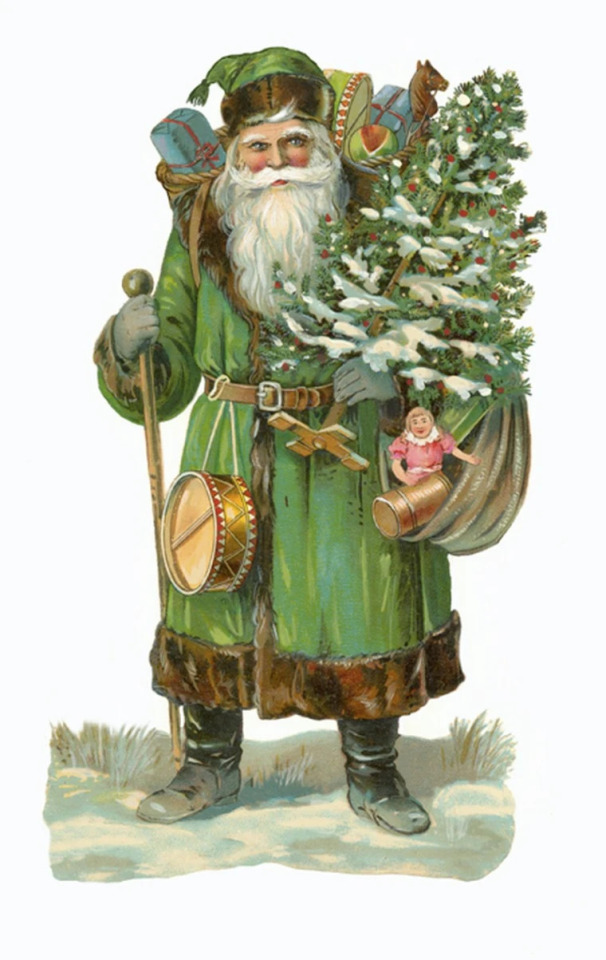

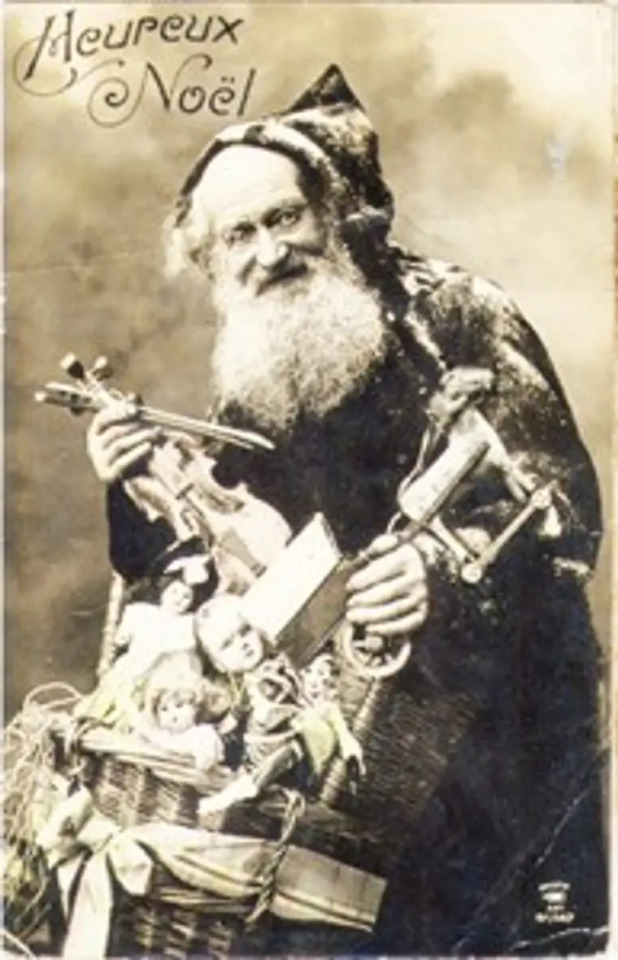
... and the imagery of Père Fouettard.







Resulting in confusing images where you don't know if you have Noël or Fouettard in front of you...

Sometimes Père Noël is explicitely confused with Saint Nicolas, which is no surprise since he partially derives from him, and Saint Nicolas also acts as Père Fouettard's companion...


... But surprisingly, sometimes the Père Fouettard himself is confused with Saint Nicholas.

Here's an humoristic Saint Nicolas card depicting the saint with Père Fouettard (it was done in the honor of the end of a church's construction if I recall):
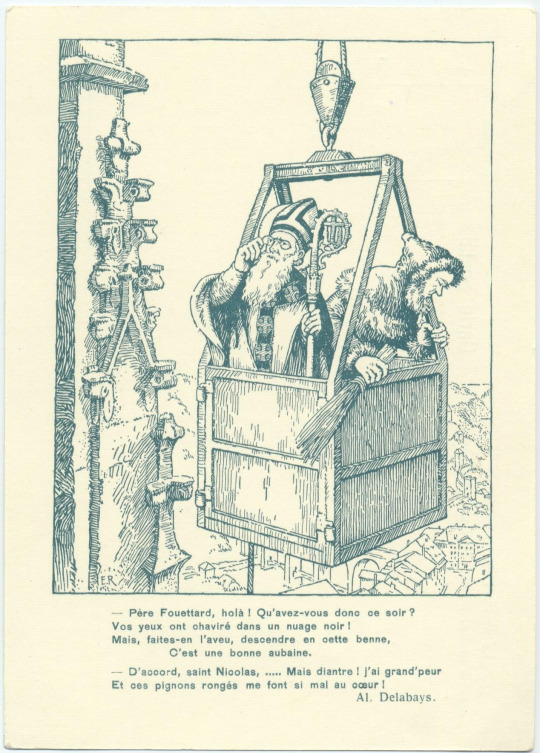
And here is an illustration that invokes not only Père Noël and Saint Nicolas, but another variation of the character rather related to the end of the year - Bonhomme Etrennes/Père Etrennes. More about him later:
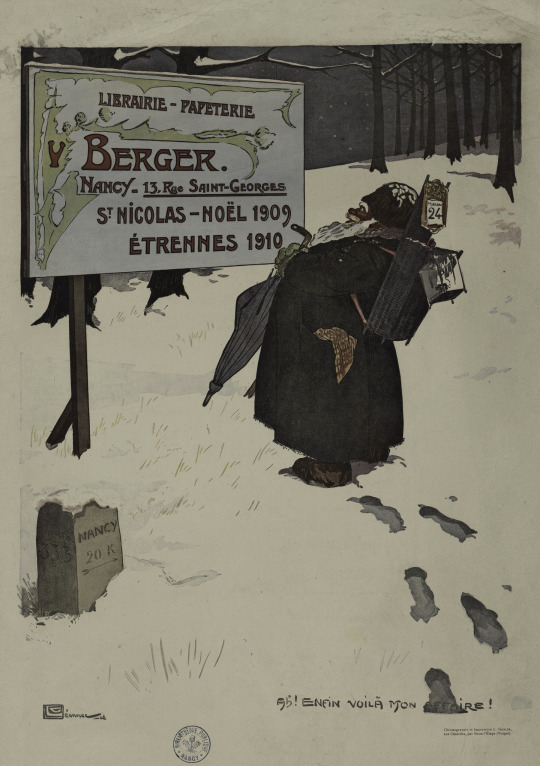
#père noël#father christmas#père fouettard#french folklore#christmas art#christmas imagery#noël#christmas#saint nicolas#saint nicholas
13 notes
·
View notes